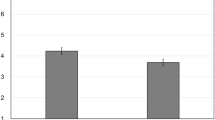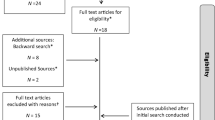Abstract
Individuals are often restricted to indirect cues when assessing the mate value of a potential partner. Females of some species have been shown to copy each other’s choice; in other words, the probability of a female choosing a particular male increases if he has already been chosen by other females. Recently it has been suggested that mate-choice copying could be an important aspect of human mate choice as well. We tested one of the hypotheses, the so-called wedding ring effect—that women would prefer men who are already engaged or married—in a series of live interactions between men and women. The results show that women do not find men signaling engagement, or being perceived as having a partner, more attractive or higher in socioeconomic status. Furthermore, signs of engagement did not influence the women’s reported willingness to engage in short-term or long-term relationships with the men. Thus, this study casts doubt on some simplified theories of human mate-choice copying, and alternative, more complex scenarios are outlined and discussed.
Similar content being viewed by others
References
Andersson, M. 1994 Sexual Selection. Princeton: Princeton University Press.
Brooks, R. 1998 The Importance of Mate Copying and Cultural Inheritance of Mating Preferences. Trends in Ecology and Evolution 13:45–46.
Dugatkin, L. A. 1992 Sexual Selection and Imitation: Females Copy the Mate Choice of Others. American Naturalist 139:1384–1389.
1996 Interface between Culturally Based Preferences and Genetic Preferences: Females Mate Choice in Poecilia reticulata. Proceedings of the National Academy of Sciences of the USA 93:2770–2773.
2000 The Imitation Factor: Evolution Beyond the Gene. New York: Free Press.
Galef, B. G., and D. J. White 1998 Mate-Choice Copying in Japanese Quail, Coturnix coturnix japonica. Animal Behaviour 55:545–552.
Grant, J. W. A., and L. D. Green 1996 Mate Copying Versus Preference for Actively Courting Males by Female Japanese Medaka (Oryzias latipes). Behavioral Ecology 7:165–167.
Höglund, J., R. V. Alatalo, R. M. Gibson, and A. Lundberg 1995 Mate-Choice Copying in Black Grouse. Animal Behaviour 49:1627–1633.
Kirkpatrick, M., and L. A. Dugatkin 1994 Sexual Selection and the Evolutionary Effects of Copying Mate Choice. Behavioural Ecology and Sociobiology 34:443–449.
Knight, J. 2000 Move over Casanova. New Scientist 168:30–33.
Pruett-Jones, S. 1992 Independent versus Nonindependent Mate Choice: Do Females Copy Each Other? American Naturalist 140:1000–1009.
Schlupp, I., and M. J. Ryan 1997 Male Sailfin Mollies (Poecilia latipinna) Copy the Mate Choice of Other Males. Behavioral Ecology 8:104–107.
Wade, M. J., and S. G. Pruett-Jones 1990 Female Copying Increases the Variance in Male Mating Success. Proceedings of the National Academy of Science of the USA 87:5749–5753.
Westneat, D. F., A. Walters, T. M. McCarthy, M. I. Hatch, and W. K. Hein 2000 Alternative Mechanisms of Nonindependent Mate Choice. Animal Behaviour 59:467–476.
Author information
Authors and Affiliations
Corresponding author
Additional information
Tobias Uller works on broad issues in evolutionary biology, such as life-history evolution and evolutionary genetics. Christoffer Johansson recently received his Ph.D. with a dissertation on biomechanics of swimming birds. Their collaborative work on humans is focused on mate choice.
Rights and permissions
About this article
Cite this article
Uller, T., Johansson, L.C. Human mate choice and the wedding ring effect. Hum Nat 14, 267–276 (2003). https://doi.org/10.1007/s12110-003-1006-0
Received:
Revised:
Accepted:
Issue Date:
DOI: https://doi.org/10.1007/s12110-003-1006-0




